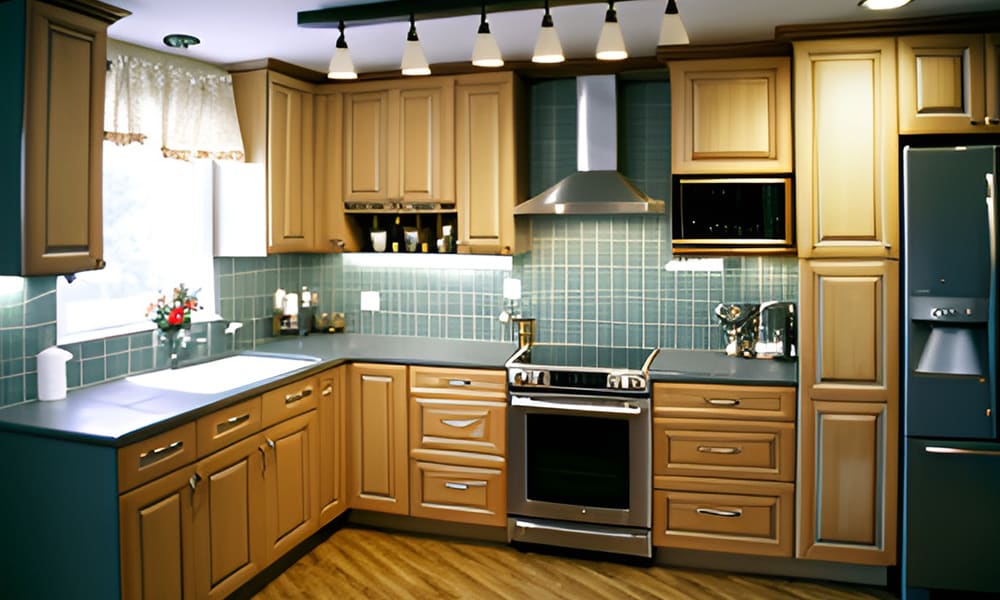Kitchen Remodeling Guide 2025 USA: Planning, Layout, Function, and Value Improvement
Wondering how a thoughtful kitchen remodel can improve daily cooking and boost your home's value? This 2025 USA guide covers planning, layout optimization, functional upgrades, material choices, budgeting, and hiring professionals to help you make cost-effective decisions for a successful renovation.

Define Your Remodeling Goals and Budget
The foundation of a successful kitchen remodel starts with clarity on what you want to achieve. Are you aiming to enhance workflow, add storage space, update the style, or increase your home’s resale value? Pinpointing your objectives early helps shape all subsequent decisions.
Setting a realistic budget is equally critical. Kitchen remodel costs generally vary widely depending on scope and materials chosen. Industry insights suggest allocating around 10-15% of your home’s value to the kitchen renovation, including materials, labor, permits, and a contingency allowance of 10-20% for unexpected expenses. Careful budgeting helps you prioritize investments and avoid costly surprises.
Assess Your Current Kitchen’s Strengths and Pain Points
Before planning changes, carefully evaluate your existing space. Consider what works well to retain and which areas cause frustration or inefficiency. Common issues include clutter hotspots, poor workflow, or insufficient lighting.
This assessment enables you to focus on features that truly improve daily usability, such as adding custom storage, increasing counter space, or redesigning clutter zones. Avoiding unnecessary alterations can save you money and time while delivering meaningful improvements.
Optimize Layout for Functionality
A key principle in kitchen design is maximizing efficiency through layout. The timeless work triangle—linking sink, stove, and refrigerator—remains a cornerstone for minimizing movement and streamlining tasks.
Depending on your kitchen’s size and how you use it, consider different configurations such as galley, L-shaped, or island-centered layouts. Ensure there is adequate space for walking and appliance access, and that drawer and door clearances are unhindered.
Incorporate features like pull-out pantry shelves, deep utensil drawers, and dedicated work zones for baking or prep to tailor the kitchen to your routine. Thoughtful lighting design—combining ambient, task, and accent lighting—enhances both aesthetics and usability.
Choose Durable, Stylish, and Eco-Friendly Materials
Material selection affects both the kitchen’s longevity and style. Quartz countertops are favored for durability and low maintenance, while cabinet finishes vary from neutral painted surfaces to natural wood grains and sustainable options like bamboo or reclaimed wood.
Hardware in finishes like matte black adds sophistication and coordinates with diverse design styles. Prioritize materials that resist stains, scratches, and wear, as well as those that are easy to clean, ensuring your kitchen stays fresh-looking for years.
Eco-friendly materials are increasingly popular, including recycled glass countertops and sustainable cabinetry, contributing to a greener home.
Balance Upgrades for Maximum Return on Investment
Data from 2024 remodeling market studies highlights that midrange kitchen remodels often deliver the highest return on investment (ROI), with some minor upgrades recouping nearly 96% of their cost at resale. Focus on updating cabinet fronts and hardware, countertops, sinks, faucets, and energy-efficient appliances.
Upscale or major remodels typically yield lower percentage returns, though they can dramatically improve lifestyle and appeal. Finding a middle ground that meets your functional needs and style preferences within a budget is advisable.
Save Costs Without Sacrificing Quality
Smart strategies can keep remodeling affordable while maintaining quality. Refacing existing cabinets rather than full replacement can reduce costs by up to 50%. Avoid relocating plumbing or electrical fixtures unless necessary to prevent costly modifications.
Consider purchasing slightly older or discounted appliances, and explore less expensive but durable countertop alternatives like butcher block or high-quality laminates. DIY tasks such as demolition, painting, or backsplash installation can lower labor costs, but complex work should be entrusted to professionals to avoid errors.
Hire Experienced Professionals and Understand Local Regulations
Engaging qualified kitchen designers and contractors familiar with local building codes and permitting requirements ensures your remodel is safe, compliant, and aesthetically successful. Check references and portfolios to choose experts with a proven track record.
Clear communication about timelines, budgets, and project milestones helps manage expectations and minimizes disruptions. A professional team mitigates risks such as inspection delays or construction mistakes.
Prepare for the Remodeling Timeline and Living Arrangements
Expect a full kitchen remodel to take approximately 4 to 8 weeks, influenced by project scope and any structural work. This period includes demolition, installation of plumbing and electrical systems, cabinetry, and finishes.
Plan for an interim period without kitchen access by arranging alternative cooking areas or relying on prepared meals. Regular progress updates from your contractor will help you stay informed and adjust plans as needed.
Personalize Your Kitchen to Reflect Lifestyle and Taste
Beyond function, adding unique touches makes your kitchen a welcoming space tailored to you. Popular personalization options include built-in wine refrigerators, coffee stations, vintage or statement lighting, and integration of smart-home technologies such as voice-controlled lighting or touchless faucets.
Consider incorporating specialized storage or work areas suited to your hobbies, like a baking station with a marble slab countertop. These details enhance enjoyment and can increase appeal for future buyers.
Conclusion
Planning and optimizing a kitchen remodel in the United States in 2025 involves a careful balance of functionality, style, and investment considerations. By setting clear goals, analyzing your current space, choosing an efficient layout, selecting durable materials, and hiring experienced professionals, you can create a kitchen that meets your needs and boosts your home’s value. Thoughtful budgeting and prioritization ensure you get the best possible outcome without unnecessary stress or overspending.
Sources
- Bob Vila: Planning Guide to Kitchen Remodeling
- KC Bath Remodel: How to Plan a Kitchen Remodel
- Hoopoesecho: Kitchen Remodeling Overview
Prices and availability mentioned vary by location, dealer, and current promotions. It is recommended to verify with local providers. This article does not contain promotional offers.




